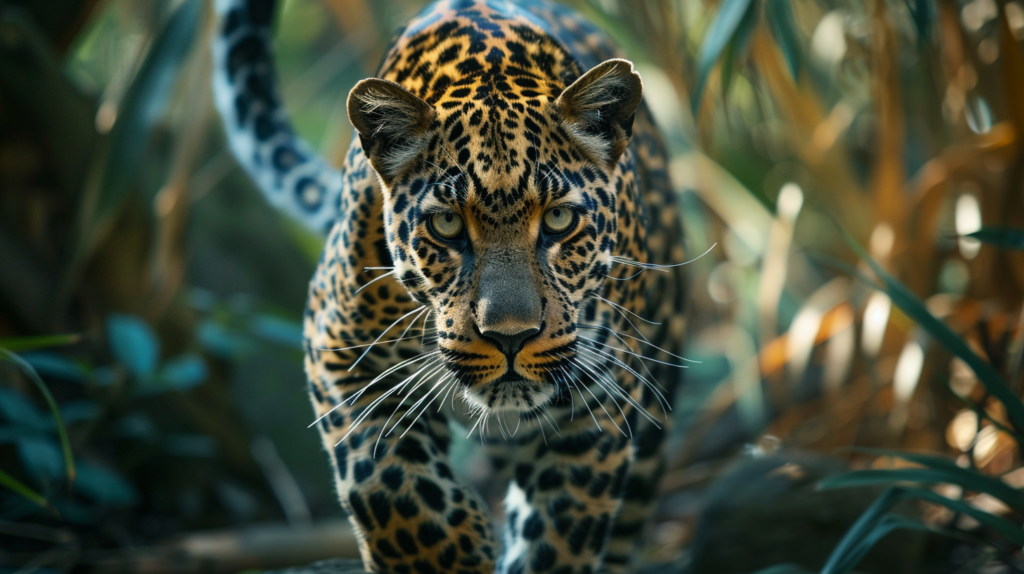Leopards are known as fierce predators, but even they have their match in the animal kingdom. From surprising underdogs to fellow big cats, these 12 animals prove that leopards aren’t always at the top of the food chain. Let’s explore the creatures that can hold their own against these spotted hunters.
African Elephant
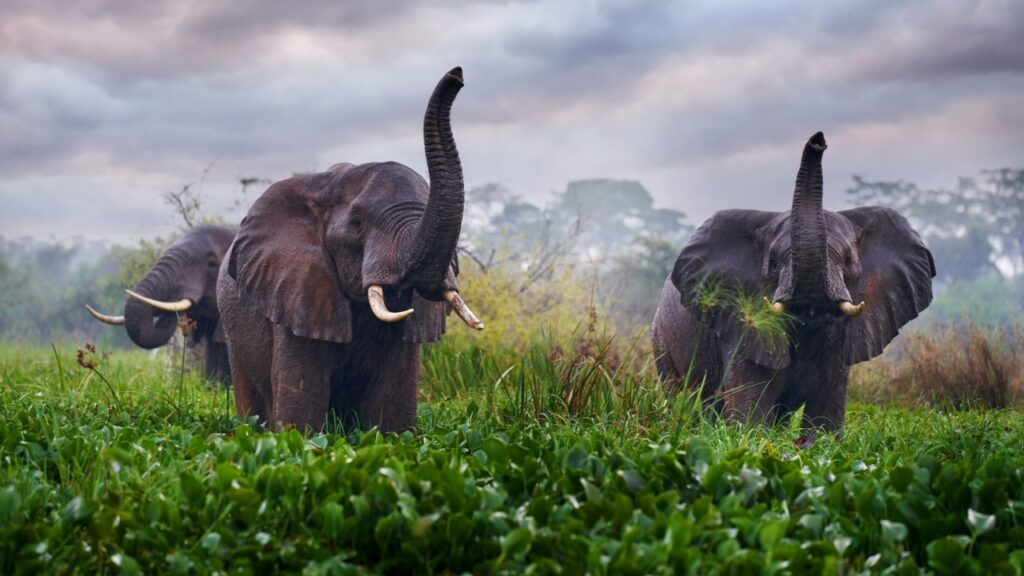
The African elephant is a gentle giant that leopards wouldn’t dare to challenge. With their massive size and incredible strength, elephants can easily fend off leopard attacks. Their thick skin acts as natural armor, making it nearly impossible for a leopard’s claws or teeth to cause serious harm. Elephards also have powerful trunks that can swat away threats with ease. In fact, leopards often steer clear of areas where elephants roam to avoid confrontation.
Nile Crocodile
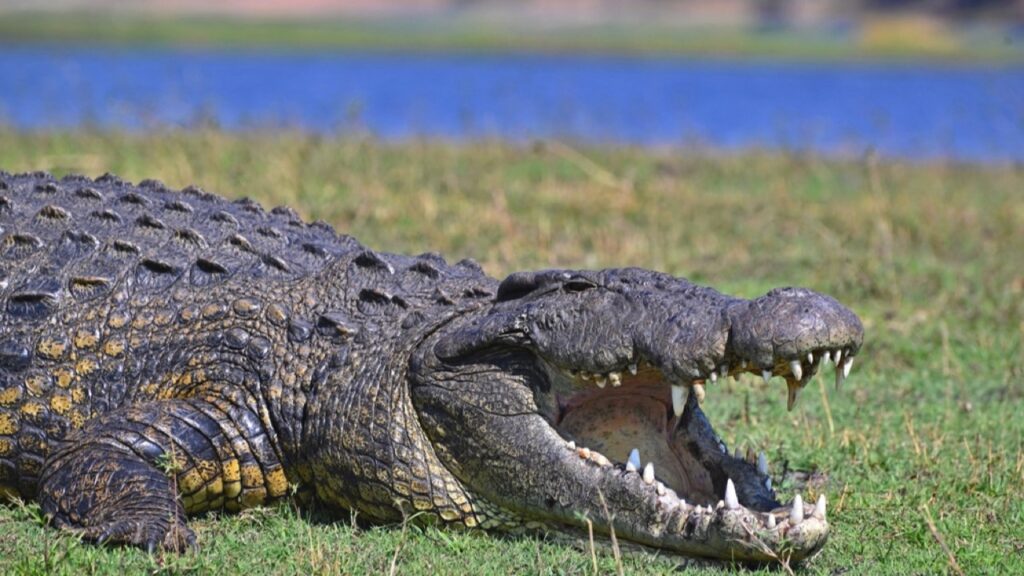
Nile crocodiles are formidable predators that can overpower leopards with ease. These ancient reptiles have incredibly powerful jaws that can crush bones and drag prey into the water. Their scaly armor-like skin provides excellent protection against a leopard’s claws and teeth. Crocodiles are ambush predators, often lurking in water bodies that leopards might approach to drink. In such encounters, the crocodile’s strength and aquatic advantage give it a clear upper hand.
African Lion
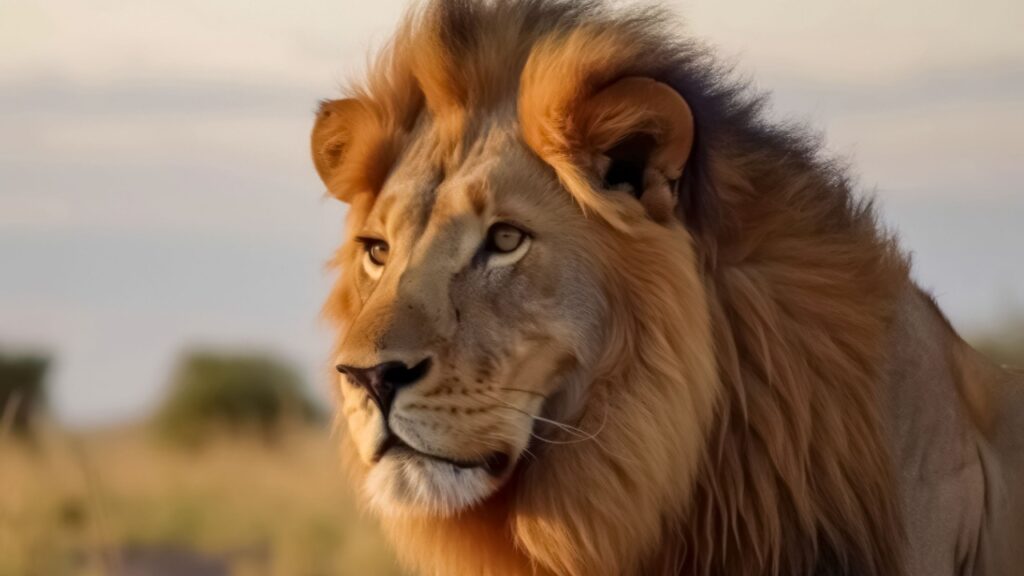
As fellow big cats, African lions pose a serious threat to leopards. Lions are larger and more powerful, often living in prides that provide strength in numbers. While leopards are solitary hunters, lions work together to take down prey and defend their territory. In areas where both species coexist, leopards often avoid lion-dominated regions and may even be forced to abandon their kills if lions approach.
Spotted Hyena
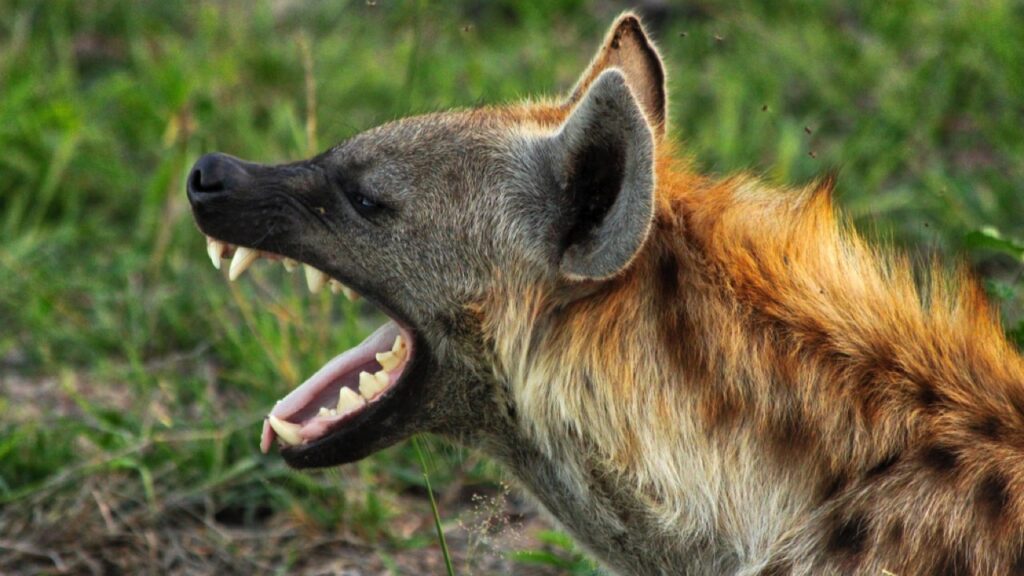
Spotted hyenas are more than just scavengers; they’re skilled hunters that can give leopards a run for their money. These intelligent animals often live in large clans, providing safety in numbers. Hyenas have incredibly strong jaws and can easily crush bones, making them formidable opponents. Their stamina allows them to chase prey over long distances, something leopards can’t match. In many areas, hyenas and leopards compete for the same food sources, leading to frequent conflicts.
African Wild Dog
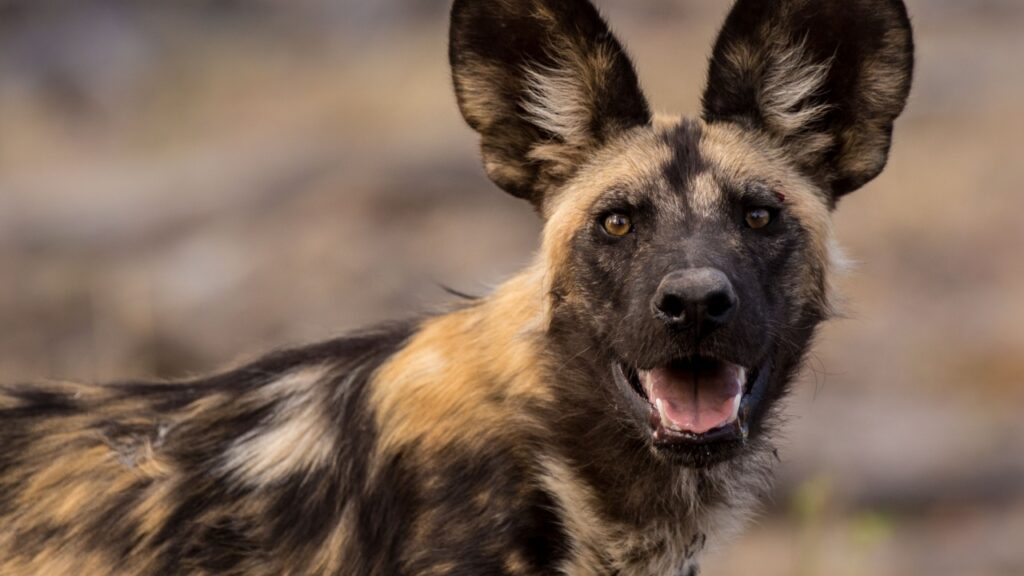
African wild dogs, also known as painted wolves, are exceptional hunters that can pose a threat to leopards. These social animals hunt in packs, using their stamina and teamwork to wear down prey. Their bite force is surprisingly strong for their size, and their sharp teeth can inflict serious damage. While a lone wild dog might not be a match for a leopard, a pack can easily overwhelm one. Leopards often avoid areas with active wild dog packs to steer clear of confrontations.
Honey Badger
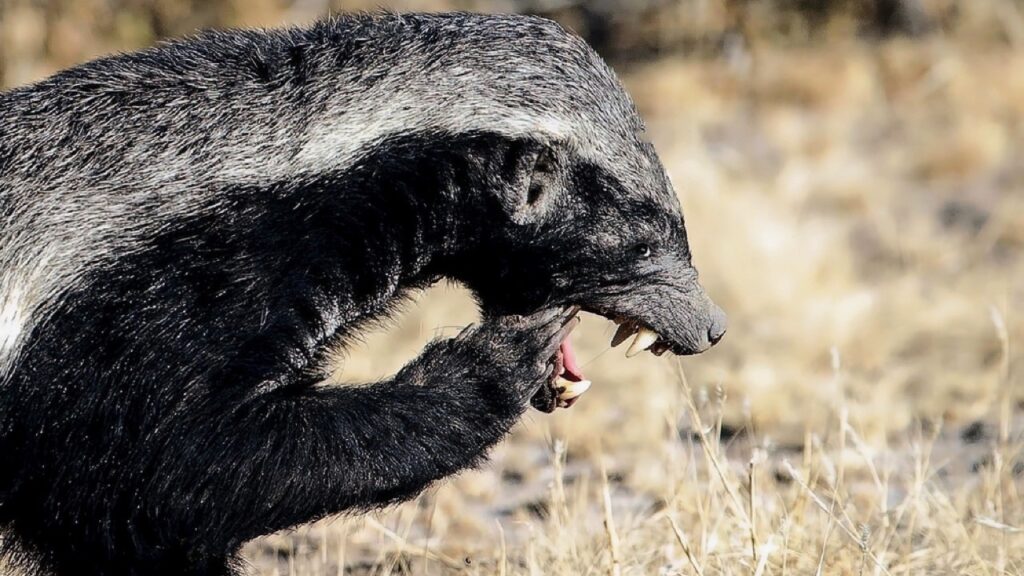
Don’t let its small size fool you; the honey badger is one of the toughest animals in Africa. These fearless creatures have thick, loose skin that’s difficult for predators to grip, and they’re known for their incredible resilience. Honey badgers have sharp claws and teeth, and they’re not afraid to stand their ground against much larger animals. Their reputation for ferocity means that even leopards think twice before tangling with a honey badger.
Rhinoceros
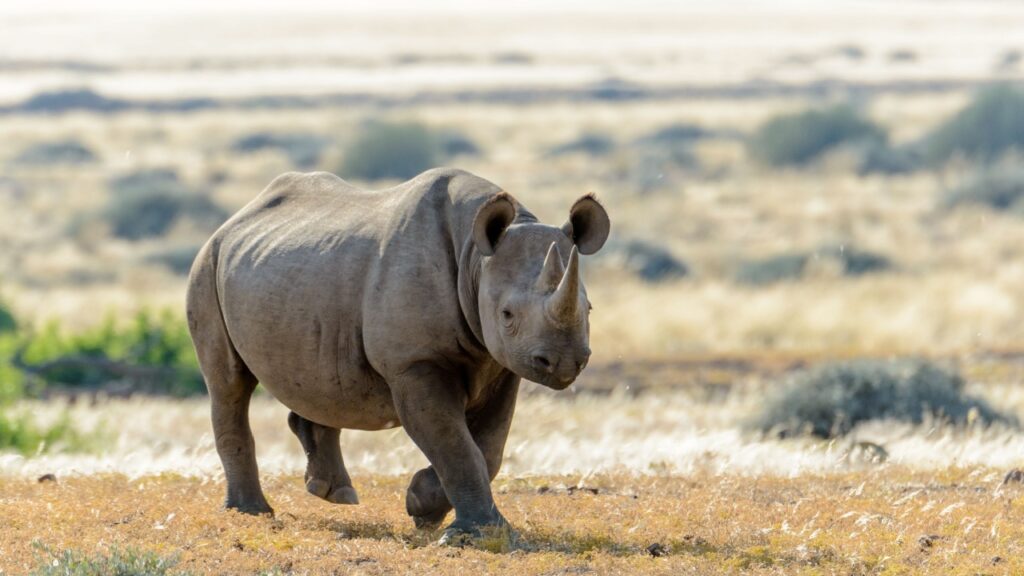
The rhinoceros is a tank-like animal that leopards wouldn’t dare to challenge. With their massive size, thick skin, and formidable horns, rhinos are well-equipped to defend themselves against any threat. Their poor eyesight is compensated by keen hearing and smell, making it difficult for leopards to sneak up on them. In fact, rhinos are known to charge at perceived threats, and their sheer mass could easily overpower a leopard.
Hippopotamus
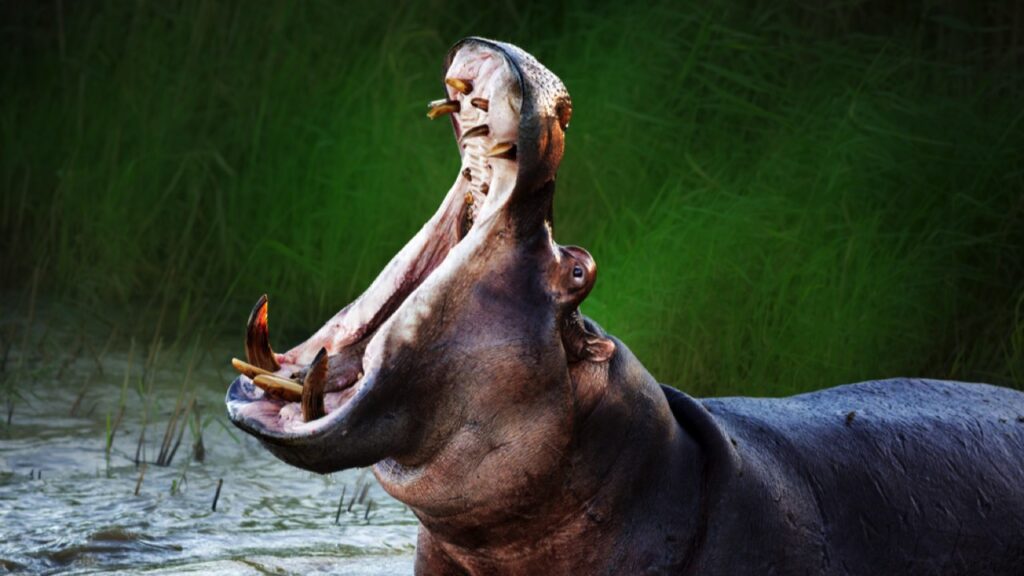
Hippos might look docile, but they’re actually one of Africa’s most dangerous animals. These semi-aquatic giants are fiercely territorial and have incredibly powerful jaws. Their thick skin and massive size make them nearly invulnerable to leopard attacks. Hippos are known for their aggressive behavior, especially when they feel threatened. Leopards typically avoid water bodies where hippos reside, knowing that an encounter could be fatal.
Python
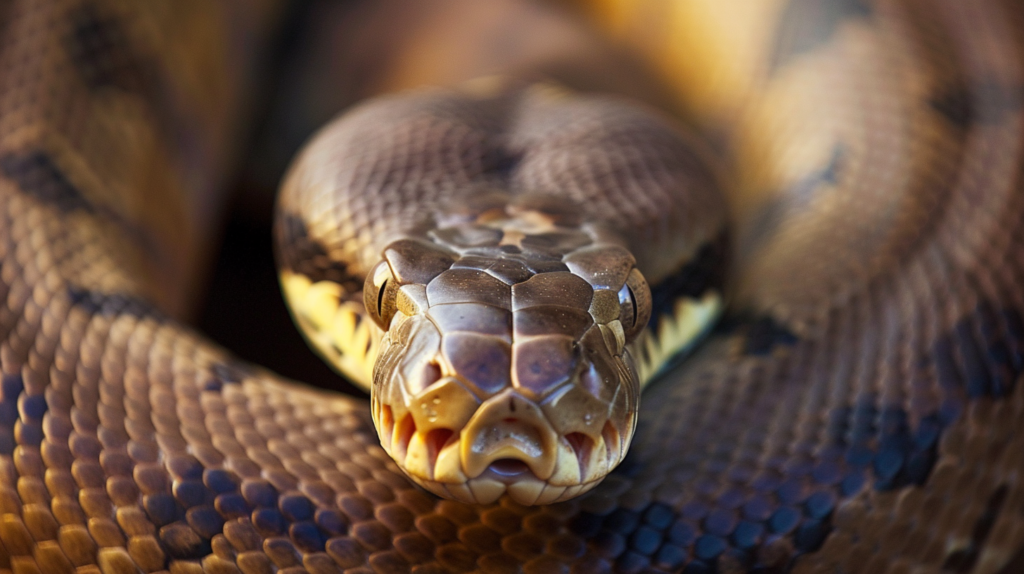
While it might seem surprising, large pythons can pose a serious threat to leopards. These massive snakes are ambush predators, capable of striking with lightning speed. Their powerful coils can quickly overwhelm even large prey, and they’re known to occasionally target big cats. Pythons have the advantage of being able to swallow prey whole, meaning they could potentially eat a leopard if given the opportunity. In areas where large pythons are common, leopards must remain vigilant.
Baboon
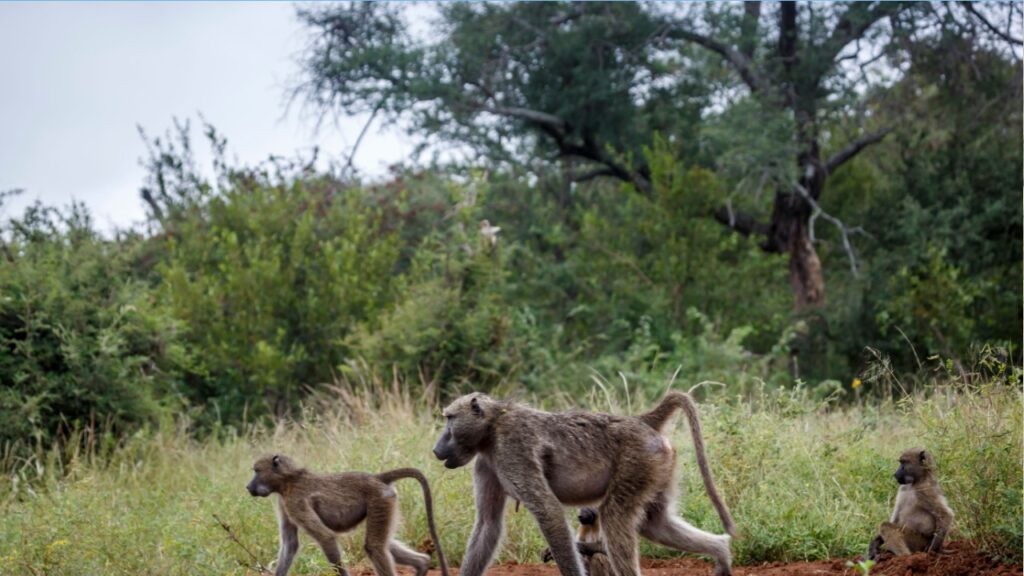
Baboons might not seem like formidable opponents, but they can be quite dangerous when in groups. These primates are highly intelligent and social, often living in large troops. Adult male baboons have long, sharp canine teeth that can inflict serious injuries. When threatened, baboons will work together to mob predators, including leopards. Their strength in numbers and aggressive defense tactics make them a force to be reckoned with.
Cape Buffalo
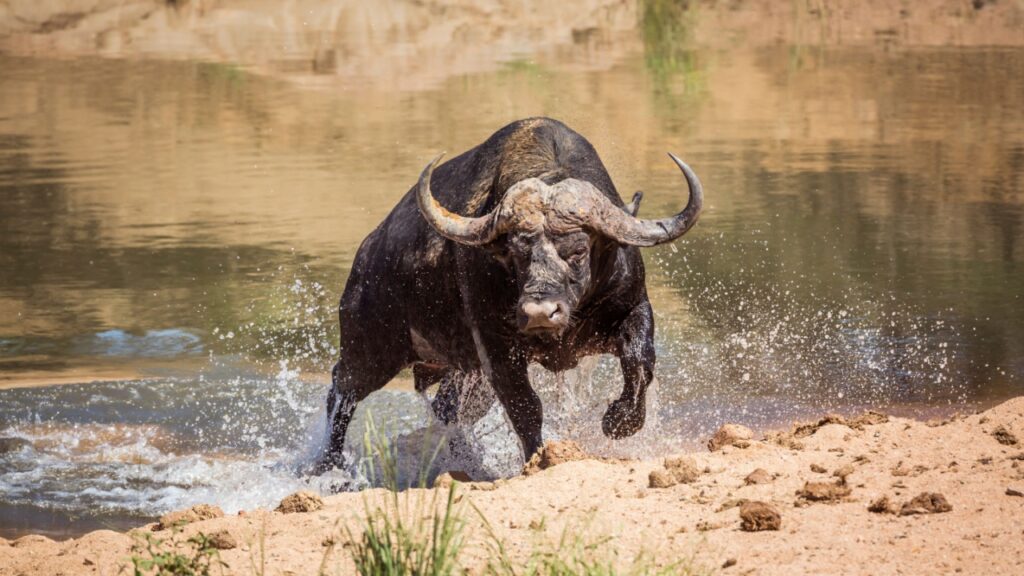
The Cape buffalo is often called “the Black Death” due to its aggressive nature and tendency to charge perceived threats. These massive bovines have thick horns and incredible strength, making them challenging opponents for any predator. Cape buffalos are known to form protective circles around their young when threatened, presenting a wall of horns to potential attackers. Leopards typically avoid adult buffalos, only targeting calves if given the opportunity.
Human
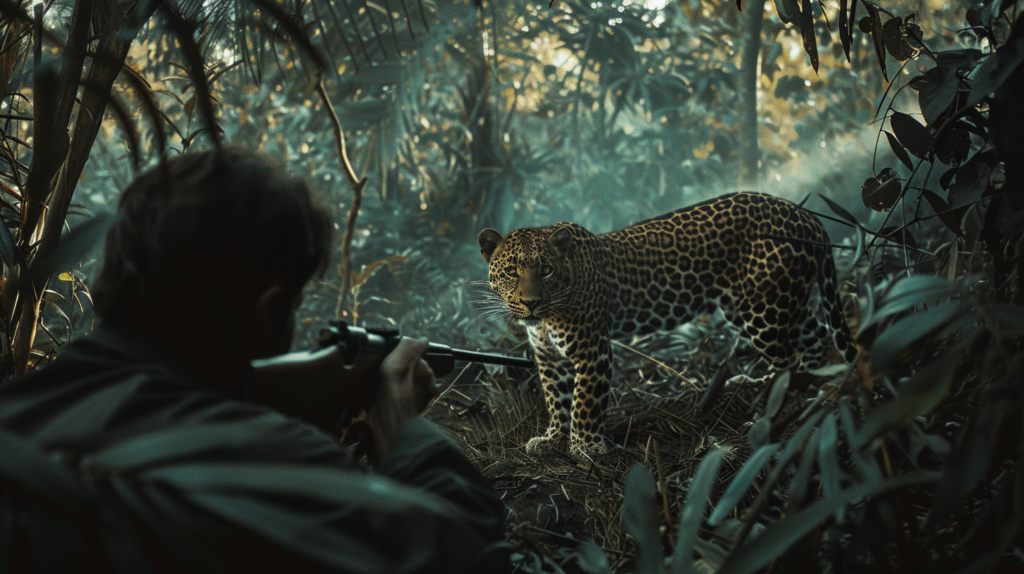
While not traditionally considered a wild animal, humans have long been the most significant threat to leopards. Our technological advancements, hunting practices, and habitat destruction have dramatically impacted leopard populations. Humans have developed weapons and strategies that far outmatch a leopard’s natural defenses. Additionally, our expansion into leopard habitats has led to increased conflict and competition for resources. Conservation efforts are crucial to ensure the survival of these magnificent cats in the face of human pressures.
Becky is a fervent wildlife enthusiast and pet care expert with a diploma in canine nutrition. Her love for animals stretches beyond the domestic, embracing the wild tapestry of global fauna. With over a decade of experience in animal welfare, Becky lends her expertise to OutlandishOwl through insightful articles, captivating wildlife information, and invaluable guidance on pet nutrition. Her work embodies a deep commitment to understanding the intricate lives of animals and a passion for educating others on sustaining natural habitats. Becky's hands-on conservation efforts and her knack for translating complex dietary science into practical pet feeding tips make her an indispensable voice for creatures great and small.

